I buy my wines based on a pretty label! That was the first thing that my friend J said during a wine dinner she hosted for a few of us, her friends. Her comment was not surprising in light of J’s status as a newcomer to the world of wine. Curious to learn more about her methodology I proceeded to pour another glass of wine and as the tone of the evening became more festive J finally confessed. Her label system was simple and straightforward adding no value to the quality of her wines but certainly setting the stage for fun conversation pieces and awesome gifting opportunities. You see, J makes her wine purchases using a theme-based method. For her last Western get together J selected wines with labels featuring horses!
Hoping to help J become a better and savvier wine purchaser I decided to begin this series and as I share with you my dear friends it is my hope that along with J you grow both in knowledge and love of wine culture.
By learning to decipher the contents of a wine label we will be better able to pinpoint flavor profiles that best match our preferences, evaluate value for our money and identify provenance and vintage setting the stage for a smarter wine selection.
Vineyard Designation
This is the name of the vineyard or state of origin for our wine. This is important since it will tell us if the grapes used for a particular wine originate fully from a vineyard subject to specific micro-climate, agricultural practices and soil chemistry.
Vintage
Most of us know a vintage is the year in which the grape for a particular wine was harvested. (if a viticulture area displays a vintage year in the label 95% of the grapes should have been harvested on that year) Specific climatic variations influence the quality of the crop in areas such as acidity, sugar content, fruit size and volume of productivity. As we go deeper into our understanding of vintages we will be able to identify nuances associated with a vintage that will impact our purchasing decision. For us in Napa, vintages 2010 and 2011 presented some challenges and 2012 and 2013 were ideal growing conditions resulting in exceptional wines. As we enter 2014 many wineries will release amazing limited production wines from these vintages.
Winery Name
While many of the wineries in Napa produce exclusively from their vineyards some source their grapes from other regions in order to increase production and perhaps in some cases cut costs. Knowing the specific practices of each winery by becoming familiar with their wine production culture will equip you to make a better and smarter purchasing decision. With larger better-known wineries it will also serve as a sort of guarantee of consistency in process.
Grape Variety
Combining a variety of grapes often makes more economical wines. Finer more flavor-profile specific wines are the result of single origin varietals that are selected for their complexity in flavors PH and sugar content that results in specific flavor profiles that define the wine. Here in Napa to be able to include a grape variety in the label you have to have 75% or more of the kind of grape additionally 75% of it has to come from the labeled appellation of origin. Some of the most common varieties are Cabernet Sauvignon, Chardonnay, Merlot, Pinot Noir, Cabernet Franc, Sauvignon Blanc, Zinfandel but many viticulturists have introduced less traditional varieties including Shiraz, Petite Sirah, Petit Verdot, Malbec, Viognier, Pinot Grigio and even Albarino. With a huge variation in terrain and endless microclimates it is a tremendous adventure to see the variations in flavor happening within the same varieties and as wine makers apply their legendary expertise, which is both art and science, one cannot help it but be deeply humbled by the amazing results.
A.V.A-American Viticultural Area
This is the area where the grapes were grown. An A.V.A is a geographical area with a set of climate and soil characteristics conducive to wine growing. These areas are defined on the request of wine producers and controlled and assigned by the Alcohol and Tobacco Tax and Trade Bureau. For a wine to display an A.V.A. at least 75% of the grapes utilized in the production of the wine must have originated from the assigned region. An A.V.A is very different from the European appellations and they do not limit the type of grape, process of vinification or crop yield. In Napa we have 16 distinct A.V.As.
Grown & Bottled on the Estate
A wine may be estate grown, or estate bottled or both. For a wine to be estate grown 100% of the grapes must originate from vineyards under the control of the winery via ownership or long-term lease of the land. For a wine to be estate bottled the grape must be crushed on location and the wine produced on location. The combination of both is often a good sign of commitment to quality and pride in craftsmanship.
Alcohol Content
Alcohol content in wine is expressed by volume. The ABV is expressed in percentages of total volume and calculated by measuring the number of milliliters of ethanol present in 100 milliliters of solution when tested at °C. Because flavor preferences have changed in the last decade and people are in search for a deeper fuller wine many wine makers allow for the grapes to ripen more resulting in higher sugar (brix) which during fermentation converts into higher alcohol content. For example, some white and balance wines can be as low as 12% ABV and some Cabernets, Merlots and Zinfandels are higher in alcohol as 16.5%.ABV
And there you have it. Wine labels 101. Until next time
Javy


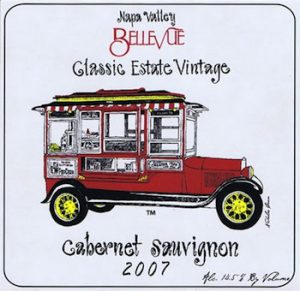
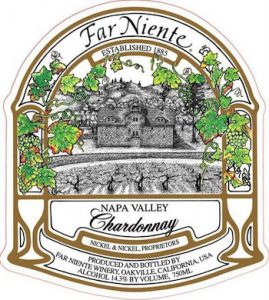

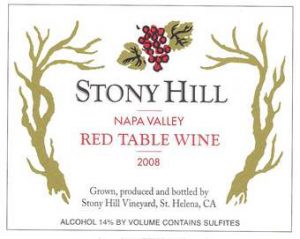

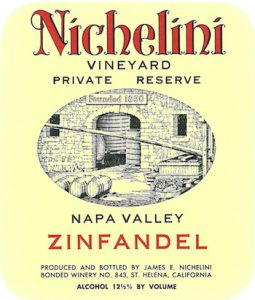
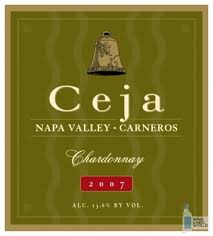
This was a good article with a few flaws.
In the Grape Variety section, it states: Here in Napa to be able to include a grape variety in the label you have to have 75% or more of the kind of grape additionally 75% of it has to come from the labeled appellation of origin.
Where in the following section-A.V.A-American Viticultural Area it says: For a wine to display an A.V.A. at least 85% of the grapes utilized in the production of the wine must have originated from the assigned region. An A.V.A.
ADMIN
Jax,
Thanks for your kind words. Corrections made!